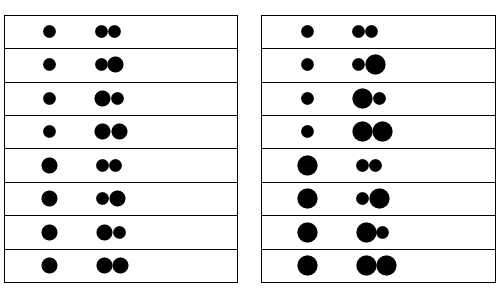Using a "successive impact model" (as if each ball were seperated from the other ones), I produced the following animations:
You can see any combination of balls with masses of 1 or 2 (left) or 1 and 4 (right).
Unfortunately, I do not have any Newton cradle to make some experiments, and I'd like to compare my results with observations. I contacted the author of this website, which is the most instructive one I found about asymmetric Newton cradle. In particular, he writes that the "OoO" configuration behaves as the "ooo" one, which is not what I simulate. But the author is not sure whether who is wrong because he did the experiments a long time ago.
I am especially interested in asymmetric Newton cradle with simultaneous impacts: left and right balls collinding at the same time.
Please let me know if you have any idea on where to find such experimental data.
Edit Just of few general remarks to avoid extending the comments.
Energy and momentum are conserved. However, they are sufficient to ensure uniqueness of the post-impact velocities only when there are 2 balls. The successive impact model precisely consists in propagating the impact ball after ball, and therefore leads to a unique solution (which conserves momentum and energy globally).
From the waves point of view, changing the mass of a ball can be done by increasing the diameter, or the density (or a combination of both). This simple model cannot account for such subtleties of course, but maybe it does not matter when the balls are "small enough".
Even if I think it's quite basic, following WetSavannaAnimalakaRodVance's comment, I am ready to hand out my Mathematica code to anybody who wants it. I'll check for good ways to share it.

No comments:
Post a Comment